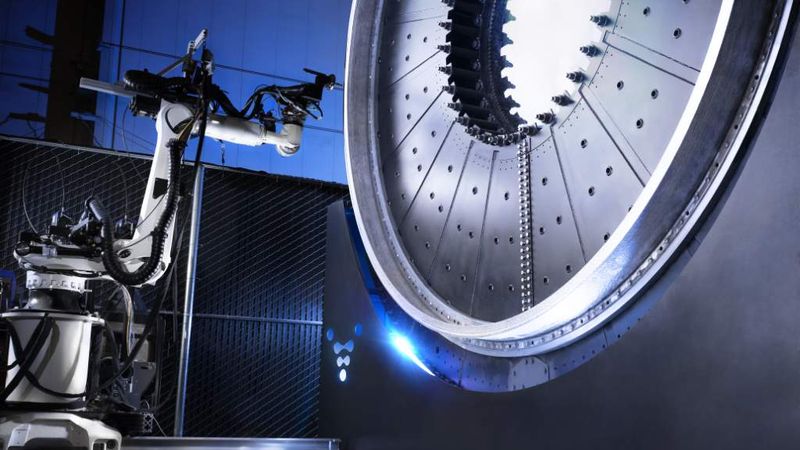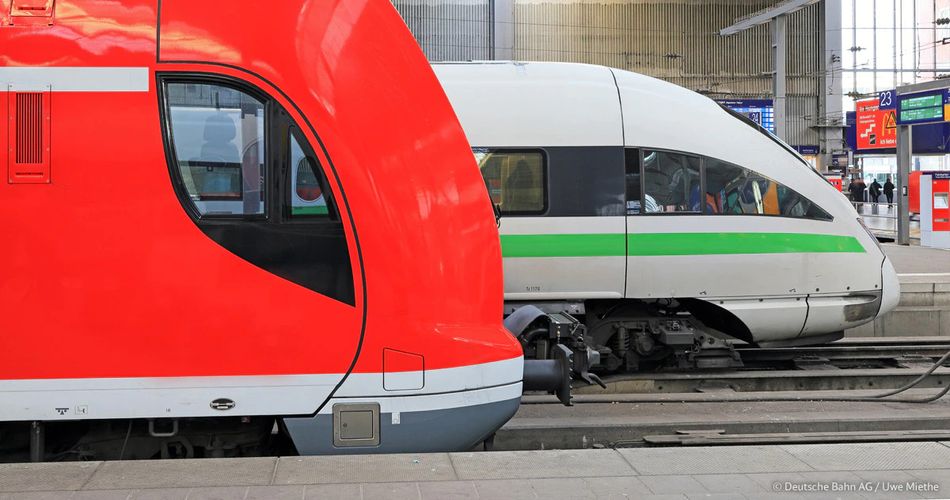An Evolving Industry: 3D Printing Trends and Challenges
As 3D printing continues to mature, we look at the technology’s latest trends as well as continuing challenges that must be tackled

Image credit: Relativity Space
The 3D printing industry has evolved tremendously since the first 3D printing technologies were invented in the 1980s. For a long time, 3D printing processes—which involve the construction of an object through the deposition or solidification of material based on a digital 3D model—were intended solely to produce prototypes thanks to their ability to cost efficiently produce one-off or small-batch parts.
Today, prototyping is still an important aspect of 3D printing, but there has been a growing focus on end-use production. Industries such as aerospace, automotive, medical, and energy are using 3D printing to come up with new and innovative solutions, such as higher-performing and more efficient parts. 3D printing is also finding its place alongside other manufacturing processes, which is unlocking new possibilities for conventional processes like injection molding.
At this critical moment for 3D printing, where many believe the technology is on the brink of industrialization, we want to take stock of the leading trends and challenges of 3D printing.
3D Printing Trends
As 3D printing evolves, it is important to understand where the technology is and what direction it is headed. These key trends illustrate how 3D printing is being used today, and what 3D printer OEMs, service bureaus, and 3D printing adopters are focusing on for the future.
Transforming product development with in-house 3D printing
One of the most widespread uses of 3D printing technologies is still rapid prototyping. There’s no surprise why: 3D printing is unprecedented in its ability to rapidly and cost-efficiently produce high-quality prototypes both for visual and functional purposes. With a 3D printer in-house, product designers and engineers can rapidly bring 3D models to life for testing and evaluation. From there, changes can be easily integrated and new iterations printed.
Industrial drone specialist Exyn Technologies is just one of the companies that has benefited from 3D printing’s agility for prototyping. With in-house 3D printing capabilities, Exyn has dramatically shortened production lead times while still ensuring that the best part design has been reached thanks to easy modifications. For example, the company can design and produce custom mounting interfaces for its drone sensor stack in just weeks. Having the technology in-house also reduces lead times by eliminating shipping times and third-party manufacturer wait times.
3D printing spare parts on demand
3D printing has the potential to revolutionize spare parts production, overcoming many of the challenges associated with more traditional spare parts processes, including inventory and warehousing costs, complex logistics, and long lead times. With 3D printing, manufacturers can leverage digital inventories to produce replacement parts when and where they are needed. Moreover, 3D printing can reproduce rare or obsolete parts that may no longer be available, all without the need for costly tooling.
German railway company Deutsch Bahn (DB) currently produces over 100 types of replacement part using 3D printing to keep its trains up and running. Parts like headrests, coat hooks, and fan propellers can be replaced rapidly to minimize train maintenance and down times. This is particularly beneficial for older train parts that may no longer be stored in existing spare parts inventories. Previously, DB would have had to order custom molds to reproduce the broken component, which would have been time- and cost-consuming.
New 3D printing materials are opening new applications
One of the clearest signs 3D printing is progressing steadily towards industrialization is the ever-growing diversity of materials. Once primarily associated with low-grade plastics suitable for prototyping, 3D printing is proving its production viability and versatility thanks to the development of industrial-grade plastics, composites, metals, and ceramics. These materials—developed and qualified for specific additive manufacturing processes—are critical to the exploration of new high-performance applications.
High-temperature polymers like PEEK and PEKK, as well as thermoplastic composites reinforced with carbon or glass fibers, demonstrate an excellent strength-to-weight ratio that makes them more cost-effective alternatives to metal. When it comes to metal AM, the number of different printable alloys is on the rise (though still substantially less than traditional manufacturing methods), comprising aluminum, stainless steel, tool steel, titanium, nickel, cobalt, chromium, copper, and precious metal alloys. Ceramics, particularly technical ceramics, represent a highly promising avenue for 3D printing in the aerospace, medical, electronics, and energy industries.
Combining 3D printing and traditional processes for hybrid manufacturing
As the technology matures, 3D printing is finding its place among more traditional manufacturing processes like machining and injection molding. In fact, many manufacturers are realizing the benefits of using 3D printing to enhance the efficiency of more conventional methods and vice versa. In one hybrid manufacturing approach, 3D printing is used to produce near-net shaped parts, and CNC machining is employed to finish the part and achieve tight tolerances.
Another innovative example of a hybrid production method is Mitsubishi Chemical Advanced Materials’ (MCAM’s) SPRINT prototyping process. In this process, a mold is 3D printed using a dissolvable material and is subsequently used for injection molding. The mold is then dissolved, resulting in the finished prototype. This technique combines the benefits of AM (design freedom and cost efficiency for small scale production) with those of injection molding (material versatility and high quality with minimal post-processing).
3D Printing Challenges
While the current trends in 3D printing point to a maturing industry with massive potential, there are still challenges to broad adoption, both in terms of technical hurdles and broader industry issues.
Overcoming limits of 3D printing speed
On the technical side, the speed of 3D printing is still an important issue. 3D printing is typically faster than traditional manufacturing for single unit or small-batch production runs. This is primarily due to the fact that it does not require tooling. However, as soon as you start to scale up production volumes with 3D printing, the time it takes to 3D print becomes a challenge.
Fortunately, the issue of low print speeds is being tackled on several fronts. On the one hand, system developers are optimizing printing parameters to improve build times (in terms of the printhead or laser speed as well as in terms of print bed orientation and stacking). On the other, time-heavy post-processing steps, which are still mostly carried out by hand, are being increasingly automated for greater efficiency.
Limitations in build size
The size limitations of 3D printing vary depending on the printer in question, but generally speaking it is not possible to build big parts on most systems. This means that 3D printing has typically been used to produce small- or medium-sized parts (up to 0.5 meter square), limiting the type of applications the technology is suitable for. In some cases, size limitations require manufacturers to print 3D models in multiple segments and then assemble them like a puzzle after printing, which adds significant post-processing time and can influence structural strength.
The good news is that the range of large-format 3D printing systems is on the rise. Fiber-reinforced extrusion technologies are enabling the production of parts measuring over one-meter square. And metal processes such as Wire Arc Additive Manufacturing are demonstrating how large-scale metal 3D printing is possible. In a particularly compelling example, Dutch company MX3D 3D printed and installed a fully functional 3D printed stainless steel bridge in Amsterdam.
Reducing 3D Printing’s Environmental Impact
3D printing is generally seen as a greener production technology due to its on-demand, on-location nature, as well as its ability to produce complex geometries resulting in more lightweight, fuel-efficient parts. However, this is only part of the picture. Many in the 3D printing industry recognize that there is still a ways to go to make the technology more sustainable.
One of the primary ecological issues for 3D printing is materials and waste. Plastics, most of which are derived from fossil fuels, are still the most used 3D printing materials. Though some 3D printing polymers can be recycled, there is a lack of recycling or reuse infrastructure for many filaments, resins, and powders, which inevitably leads to plastic waste. Test prints, supports, and failed parts largely end up in the trash, while new materials are made from non-renewable resources. In the face of this challenge, many material manufacturers and 3D printing companies are seeking to develop renewable materials (such as bio-based plastics) as well as to establish robust recycling and reuse processes for a more circular economy.
Bridging the Knowledge and Skills Gap
Another challenge that is slowing the adoption of 3D printing is a knowledge and skills gap. 3D printing is not only a relatively new technology, it has also brought with it a new manufacturing paradigm, especially when it comes to design. This means that many engineers and designers may not have learned how to design for additive manufacturing (DfAM) and are lacking the skills to make the most out of the technology.
Similarly, education surrounding the more technical aspects of 3D printing processes are not as integrated into learning programs as more traditional manufacturing processes, which has created a demand for 3D printing technicians. As 3D printing becomes more established, however, AM-specific skills and training will be further integrated into all levels of education. There are also an increasing number of options for upskilling and reskilling employees to make AM adoption a possibility.
A Promising Outlook
Ultimately, 3D printing—both as a technology and an industry—has grown tremendously since it was invented over four decades ago. Today, the direction the industry is taking is increasingly focused on industrial applications that really make the most of additive manufacturing’s capabilities. The trends we’ve covered are being fully explored, while the challenges that persist are being tackled by many players in the 3D printing space.
About the sponsor: Mouser Electronics
Mouser Electronics is a worldwide leading authorized distributor of semiconductors and electronic components for over 1,100 manufacturer brands. They specialize in the rapid introduction of new products and technologies for design engineers and buyers. Their extensive product offering includes semiconductors, interconnects, passives, and electromechanical components.




